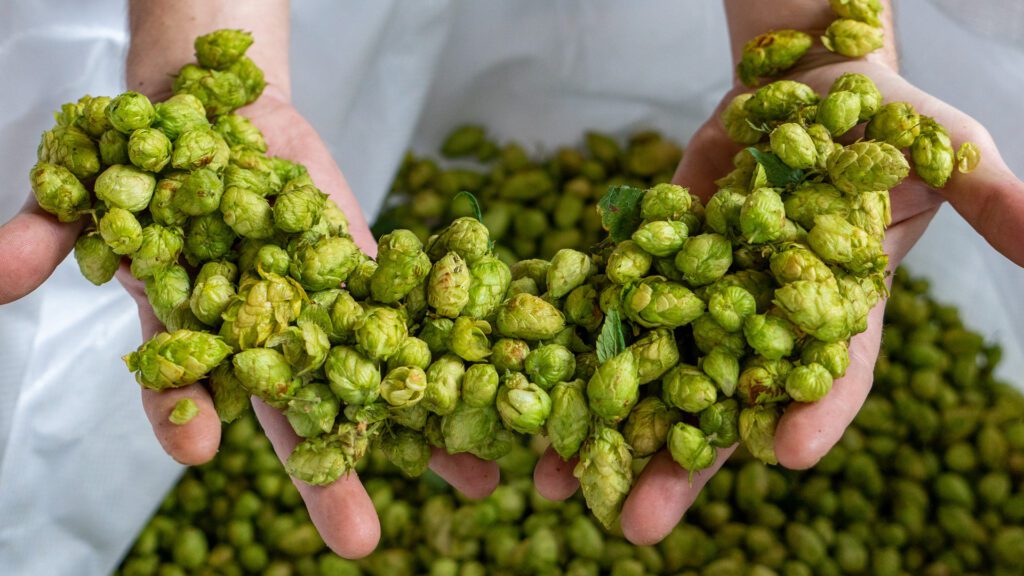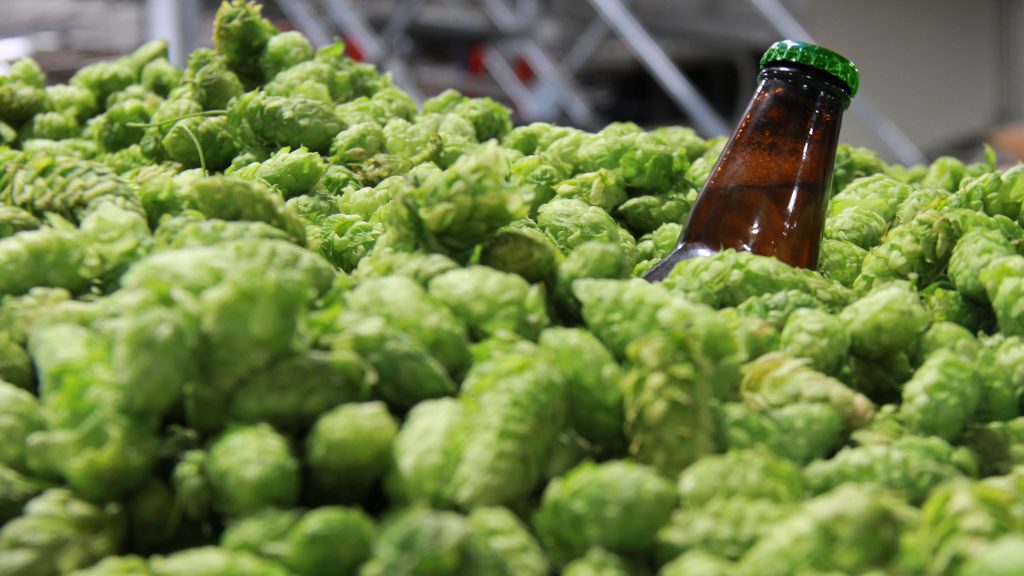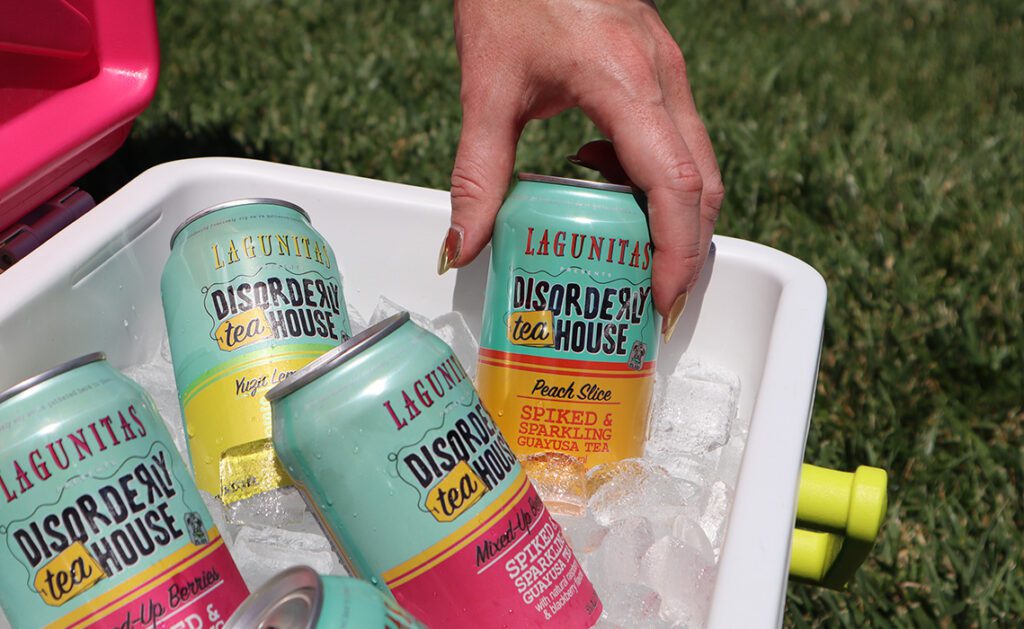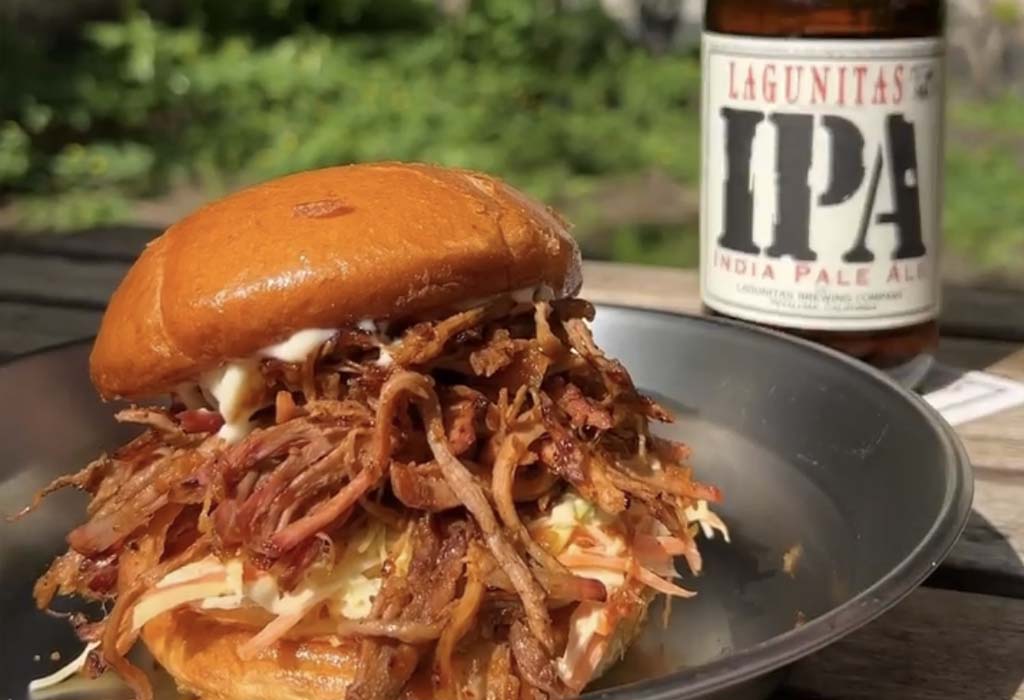By: Dan Schmelzer, Head Brewer, Seattle Taproom & Beer Sanctuary
Hello there intrepid wanderer of the Lagunitas blogosphere! As you’ve made it this far I’ll take the liberty of making a few assumptions. . .you are already aware of the love affair that Lagunitas has had with hops going back to our inception back in ’93, that love has led us to some very hoppy experimentation yielding (mostly) fantastic and oftentimes boundary-pushing results, and that we are constantly striving to better understand the seemingly infinite aspects of utilizing the flowers of this incredible plant to create beers of a hoppy magnitude that are now enjoyed around the world. The specific topic at hand is something that is near and dear to my heart as both a brewer and a resident of the Pacific Northwest: FRESH HOPS!
If you’ve been following our Beer 101 Brewer Mumblings you’ve already had the opportunity to learn about the worldly history of the plant we are discussing, Humulus Lupulus, which first made it’s documented debut in beer in 736 AD in the Hallertau region of Germany. We don’t know for sure but can only assume that these beers utilized the pungently aromatic and lupulin packed flowers in their fresh form and that the resulting brew certainly delighted the senses of those imbibing in it’s splendor. At some point a few hundred years later the freshly harvested hops would be kilned to remove moisture then baled for storage over time to be used throughout the year. The simplicity of the whole hop cones in bales would much later (and still to this day) be processed into concentrated pellets for longer shelf stability and reduced degradation of the potent oils that give hops the qualities we desire.
That brings us back to the topic we are here to discuss today! We now know that oxygen and light quickly degrade those precious attributes that give hops the character we are after as brewers. As hops are only grown in limited regions around the world, brewing true fresh hopped beers is only possible within close distances to these hop growing regions as to preserve those attributes so they can be expressed in their truest form in the finished beer. The unspoken rule of fresh hopped beers is they are to be added to the brew within 24 hours of being picked from the field, or as I like to say the “dirt-to-wort” time. As you may have guessed the fresher the better so being a brewer in Seattle I am a mere couple hours drive from the Yakima Valley where an overwhelming majority of the US hop supply is grown and is one of the largest hop growing regions in the world. I am proud to say my quickest dirt-to-wort time is 3 hours. . .and what a difference freshness makes!
Fresh hops provide a remarkably (you guessed it!) fresh expression in a beer versus the aforementioned pellets. If you’ve ever had the pleasure of walking a hop field during harvest you know the combination of aromas that emanates from these wonderful flowers is unmistakable. Let me attempt to paint an olfactory picture for you. . .a hop field at harvest is a blend of bright citrus peel, aromatic cooking herbs such as parsley and celery, fresh cannabis, whispers of pine needle, and oftentimes pungent “OG” aka onion and garlic (not OG as is in OG Kush which you may have assumed I was referring to, though the dankness of fresh hops is certainly apparent!). When utilized in a way that preserves these qualities in the finished brew these attributes simply jump out of the glass and into your nostrils then dominate your palate with dank, bright, fresh hoppy goodness.
The question you may be asking yourself at this point is “how in the h-e-double hockey sticks do these crafty brewers brew with these fresh hops?!?” Well that can be a contentious point of conversation between brewers who all have multiple opinions on how to most effectively translate the character of the hops into the beer in a way that preserves that “stroll through a hop field” profile. Do you add them to the kettle? Whirlpool? Wet hops into the fermenter? How much to use? We know that hops contain very volatile compounds that are susceptible to degradation with heat, so most are in agreement that they should be added to the brew after the boil is complete. Some brewers add them to the whirlpool after cooling the wort a bit down to a temperature that is less likely to simply blast those aromatic compounds out of the brew. Some will use what’s called a “hop back” which is a vessel that is filled with hops and is inserted between the brewhouse and the fermenter for the wort to pass through on it’s way from one to the other. Others use their mash tun as a hop back to allow for easier clean-up after the hops are soaked with the wort. All of these methods would be “hot side” usage. Cold side additions are also common, though when added to the fermenter the yeast acts upon the hop compounds and tends to alter them slightly into something not exactly resembling being downwind from a hop field but still quite potent, desirable, and true to the nature of the hops. These applications are just a few examples, so as you can see there is no shortage of opinions on how to best use the fresh hops to create a desirable outcome and if you ask me, they’re all correct!
The nature and soul of craft brewing is to ever-evolve the process and strive to create new methods to get the most out of the raw materials that are used to create beer. This year’s harvest, for instance, I saw brewers using weed whackers to chop up the fresh hops in effort to expose the lupulin glands that are the source of the oils and aromatic compounds we’re after! Hop harvest is one, if not the (sorry not sorry Santa), best times of the year especially for brewers and lovers of hop-forward beers who reside close enough to a hop growing region to celebrate the farmers and their dedication to growing such a beautiful plant by brewing beers that honor the plant with the freshest beers possible. Cheers to you and all of our hop farmers!




